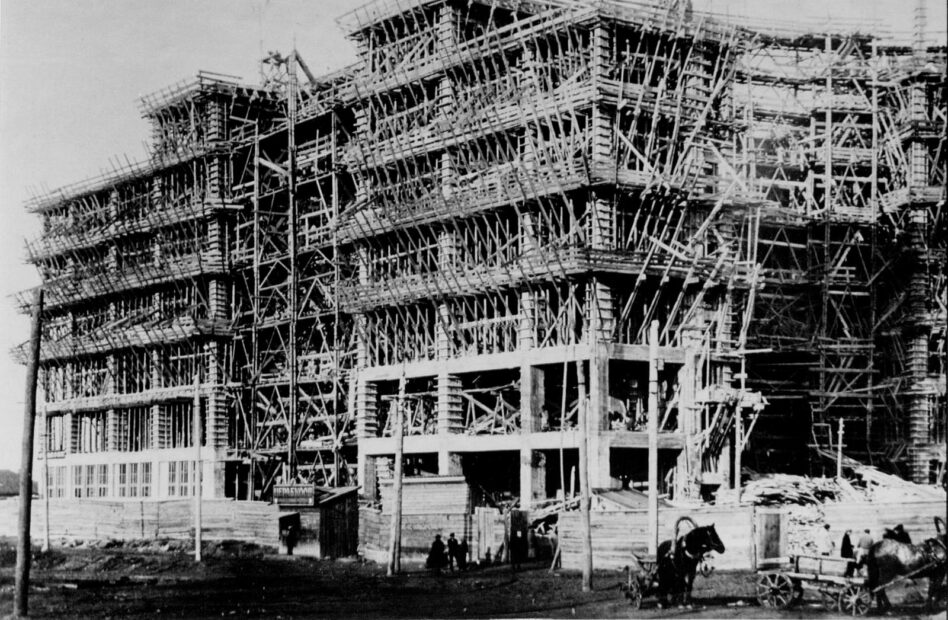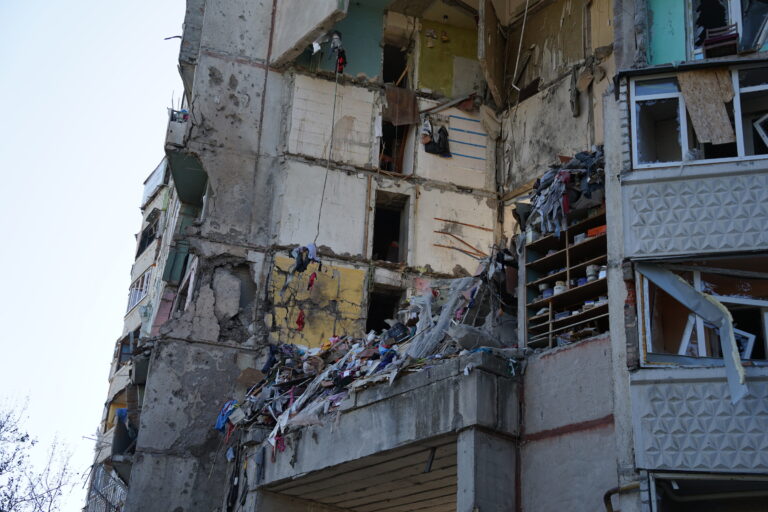Even in Ukraine, many refer to Kharkiv as the first capital. Was Kharkiv the capital of Ukraine, and was it the first one? Read our material below.
The Kharkiv-capital-of-Ukraine title greatly comforts the citizens overwhelmed by a sense of regional patriotism amidst the war. This idea comes from when the Bolsheviks set up the Ukrainian Soviet Socialist Republic opposing the pro-Ukrainian Central Council.
However, during the Ukrainian Revolution, Kharkiv was not the first capital and the most interesting, not the only one.
During 1917-1919, the government in the city changed six times. The city became the capital of as many as three Soviet republics: the Soviet clone of the Ukrainian People’s Republic – the Ukrainian People’s Republic of Councils of Peasant, Soldier and Cossack Deputies, the Donetsk-Kryvyi Rig Soviet Republic and the Ukrainian Socialist Soviet Republic.
When was Kharkiv the capital of Ukraine?
Kharkiv was granted capital status in 1919 when the Bolsheviks failed to gain a foothold in Kyiv. During the next 15 years, the city was actively developed and built.
In June 1934, an official meeting of representatives of the highest authorities of Soviet Ukraine arrived in the city after the decision to move the capital from Kharkiv took place in Kyiv.
The modern Svobody Square (Freedom Square) was built as a new central square when Kharkiv was the capital. Moreover, one of the first Soviet skyscrapers, Derzhprom, the Kharkiv landmark, was constructed. However, many large-scale architectural projects remained on paper. In archival photos from the 1920s and 1930s, you can see what the “capital” Kharkiv looked like.

Kharkiv – the capital of which Ukraine?
On Nov. 20, 1917, the creation of the Ukrainian People’s Republic (UPR) was announced in Kyiv, with Kyiv as its capital (although the Ukrainian People’s Republic initially declared a federation with the Russian Republic).
A bit later, on Dec. 25 of the same year, 1917, another UPR was proclaimed in Kharkiv – the Ukrainian People’s Republic of Councils of Peasant, Soldier, and Cossack Deputies. Kharkiv became the center of this UPR.
Next, the Bolsheviks thought of establishing Soviet power in Kyiv, Ukraine’s historical, cultural, and political center. From 1918 to 1919, the communist troops captured Kyiv twice and transported the Soviet government there, but in about a month, they had to retreat.
Having finally captured Kyiv in 1920, the Bolsheviks were in no hurry to move the Soviet Ukraine capital here. Bolshevik leader Volodymyr Lenin spoke out against this, as Kyiv became the center of the Ukrainian national movement during this time. On the other hand, the “red terror,” which the Bolshevik troops staged in the city, did not increase loyalty to the Soviet government.
For some time, Kharkiv was considered a temporary capital. The resolution of the Politburo of the Central Committee of the Communist Party in 1923 stated that “Kharkiv should remain the capital of Ukraine for a long time,” but not forever. The city’s capital status was officially confirmed only in the 1929 Constitution of the Ukrainian Soviet Socialist Republic.
During this time, among high-ranking party officials, there were proposals to move the capital to another city, such as the new industrial center of Ukraine, Zaporizhzhia.
When Soviet power was finally established in Kharkiv, the City Council was housed in the City Duma (modern Kharkiv City Hall) building. The All-Ukrainian Central Executive Committee was located in the Noble Assembly building. However, there needed to be more space for a vast bureaucratic apparatus in the new capital.
Kharkiv as capital was rapidly developed
Therefore, in the mid-1920s, a full-fledged capital infrastructure was created in Kharkiv. A large Dzerzhynskyi Square (modern Svobody Square) was built on an empty site near Sumska Street, which became a convenient place for holding rallies.
Later, the House of State Industry – Derzhprom, a monolithic concrete building in the constructivist style more than a hundred meters high, was built here for the central apparatus of state administration. It was erected in record time. Preparatory work began in the summer of 1925, and on Nov. 7, 1928, it was put into operation.
During the 1920s and 1930s, the Kharkiv population grew rapidly. In 1920, the city’s population was about 285,200 people, and according to the 1939 census, the number increased to 832,000.

The capital was moved from Kharkiv to Kyiv
Historically, Kyiv has been the center of Ukraine. Therefore, moving the capital there “will contribute to the further development of national and cultural construction and Bolshevik Ukrainization based on industrialization and collectivization.” Such a decision of the Soviet authorities was unanimously approved on Jan. 21, 1934.
It is not known how Kharkiv residents reacted to the transfer of the capital, but there were no large-scale or at least noticeable protest actions. The loss of capital status did not cause outrage, although today, Kharkiv residents proudly emphasize that their city is the first capital.
The new status of Kyiv was officially enshrined in the Constitution of 1935, but some ministries and departments remained in Kharkiv. The government quarter in the new capital still needed to be built.
Which cities had the status of capitals of Ukrainian states?
Mykola Vinhranovskyi, a famous Ukrainian writer-Sixtier, proposed a classification of Ukrainian capitals based on the political significance of cities in specific historical periods.
He proposed 14 capitals of Ukraine: Kyiv, Halych, Kholm, the island of Khortytsia and Zaporizhzhian Sich, Chyhyryn, Hadiach, Nemyriv, Baturyn, Hlukhiv, Lviv, Ternopil, Stanislaviv (now Ivano-Frankivsk), Kharkiv and Khust.
Can Kharkiv be called the first capital of Ukraine?
The short answer is no. The city was the capital of the Soviet clone of the UPR – the Ukrainian People’s Republic of Councils of Peasant, Soldier and Cossack Deputies, the Donetsk-Kryvorizka Republic, and the Ukrainian SSR. All these entities were under Soviet control in one way or another, but they cannot be considered sovereign Ukraine.
Read more: Slava Ukraini – How to Say Glory to Ukraine in Ukrainian
text by Denys Glushko
Follow us on Twitter, Instagram and LinkedIn for more news, stories, and field reports by Kharkiv journalists.




